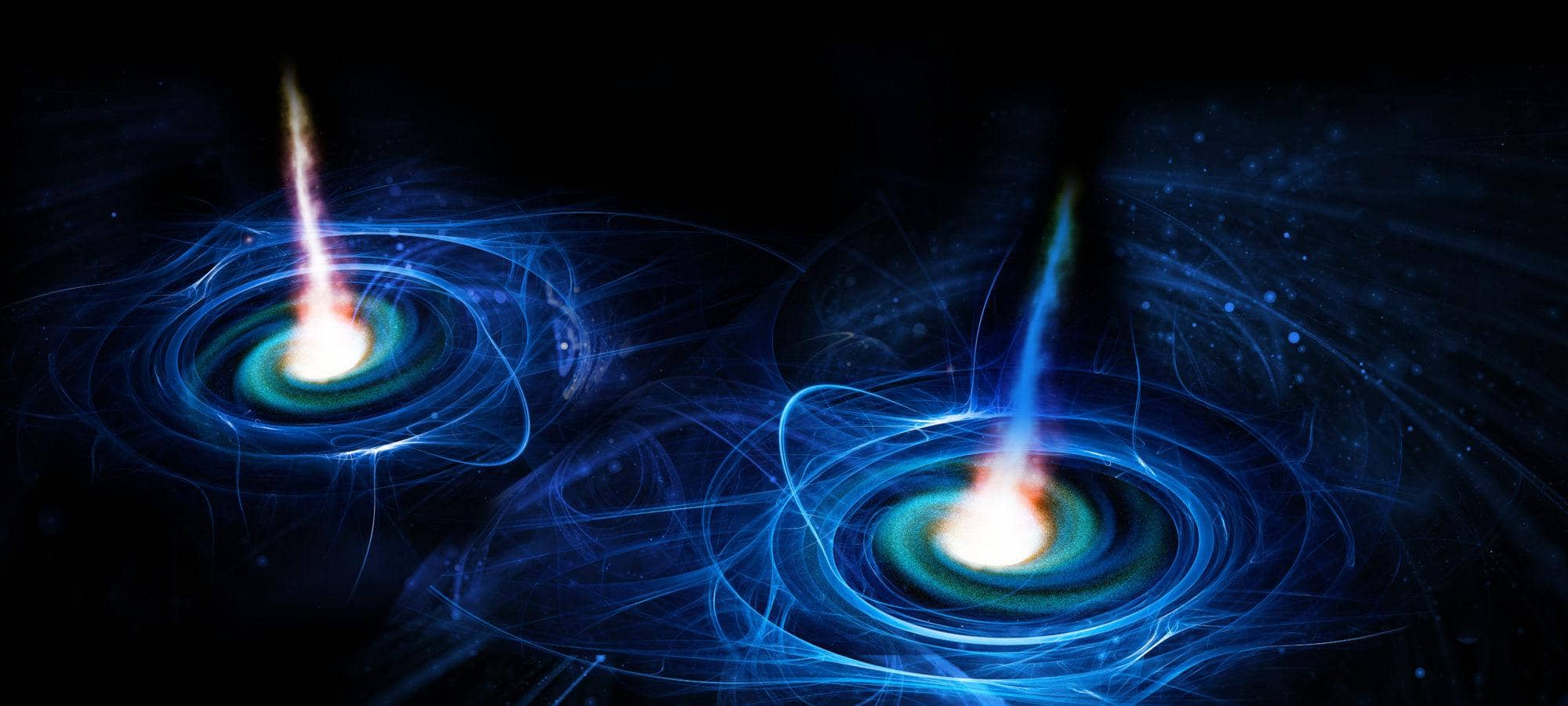LIGO and Virgo zoom in on violent cosmic collisions
New detection of colliding black holes points to “incredibly bright” future for gravitational wave science.
Take a self-guided tour from quantum to cosmos!
New detection of colliding black holes points to “incredibly bright” future for gravitational wave science.

It was a union many hoped would lead to great advances, and it seems the LIGO and Virgo gravitational-wave observatories are keeping up their end of the promise.
In an announcement from the G7 Ministerial meeting on science in Turin on Wednesday, the collaboration announced it had not only detected the merger of two black holes: it had also narrowed down the source region to a relatively small sliver of the night sky.
The result is essentially the difference between asking someone to scan half of the sky and pointing them towards a section smaller than the smallest constellation (the Southern Cross).
“Today marks an exciting milestone in the growing international scientific effort to unlock the extraordinary mysteries of our universe,” said France Cordova, Director of the US National Science Foundation.
For Perimeter Institute researcher Luis Lehner, this technological advance opens up great potential for discovery.
“The ability to know where [the source of a gravitational wave] is will bring the era of multimessenger astronomy to the front,” he said after watching the webcast of the announcement.
The different locations and alignments of the detectors also results in richer information for theorists aiming to not only understand what we’re detecting, but to predict what else we could look for.
“Gravitational waves come with two polarizations,” said Lehner. “Virgo’s different alignment allows us to identify them more accurately. That could give hints of other forces at play.”
In this instance, he said, the spin angular momentum of the black hole merger is still rather low – as if the black holes had either stopped spinning at impact, or were spinning perpendicular to their rotation of each other.
“That’s a puzzle we will have to come to grips with. Perhaps there are other things at play that drain the black holes of spin.”
The merger was detected on August 14, making it the fourth detection of a binary black hole system since the first was detected by LIGO in September 2015.
In this case, the two black holes had masses about 31 and 25 times the mass of the sun, and were located about 1.8 billion light-years away. The newly produced spinning black hole has about 53 times the mass of our sun, according to LIGO.
The additional triangulation offered by having three instruments, rather than two, allows scientists to locate the source of the wave with 20 times the precision, Virgo spokesperson Jo van den Brand said at the announcement.
“Our ambition is to open this new field of multimessenger astronomy, and I think now we have taken the first step in that process,” he said.
LIGO-collaboration postdoctoral researcher and strong gravity researcher Katerina Chatziioannou sat with Lehner to watch the webcast at Perimeter.
She said the added accuracy of triple-detections had already made a big impact. After a gravitational wave is detected, LIGO sends an alert to other telescopes and tells them where in the sky a significant event has occurred.
Until now, they could only point out large swaths of sky spanning 1160 square degrees. With the merger labelled GW170814, they were able to point them towards a much smaller patch of only 60 square degrees.
“We’re able to pinpoint much better,” she said. “We didn’t see anything [from this merger], because black holes don’t emit light.” But there’s potential for other mergers that emit observable matter to be viewed in real-time.

For researchers like Chatziioannou, whose work helps define the parameters of gravitational-wave events, this helps pinpoint those parameters more effectively. “Having Virgo helps us create better sky maps, and also helps with other measurements,” she said.
For David Shoemaker, the LIGO spokesperson at the announcement, this is just the beginning. Both detectors have now gone offline and are being upgraded before the next observing run in fall 2018.
“We’re now tuning the detectors to improve their sensitivity,” he said. “It’s predicted to be better by a factor of two. … If we increase our reach by two, the volume of sphere we can reach goes up by eight.
“The future is incredibly bright … for gravitational wave astronomy.”
Gravitational wave researchers gathered at Perimeter’s first in-person scientific workshop since the pandemic began.
Gabriela González will take the audience on a journey to some of the universe’s most violent places, and explain how such distant events can lead to a very bright future here on Earth.
She uses Einstein’s century-old masterwork to uncover fresh glimpses of the universe.